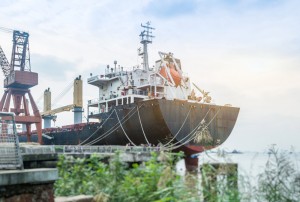Maritime chartering is the most commonly used formula when it comes to sea freight transport. While this involves several agreements with simplified rules to expedite the commercial process, these contracts vary significantly, which we are going to look at in greater detail below.
First of all, when we talk about charter, we are referring to the lease contract for a boat to transport freight. This process involves the charteree (the shipowner leasing the boat) and the charterer (who leases it to transport its load). “Charter” is also often used as a synonym for agreed price.
This contract must be formalised in writing in the “charter party”, a document that contains the details of the operation, such as the personal data of the parties and the ship captain, details of the route, lay time (loading and unloading), etc.
Porters choose the ship which best suits their load within the chartering system. This is the most suitable sea transport system for solid bulk freight, liquid bulk and mass industrial products. 3 major contracts stand out within this process, the particular features of which are detailed below.
Bareboat charter
This is a lease contract with a determined term, where the leaseholder has full control of the vessel, including the right to designate captain and crew. It is used whenever one wishes to operate a ship.
The lessor or owner of the vessel is solely entitled to receive a regular payment for rental of the same. They have no liability in relation to the freight or transactions of the vessel during the contract term.
The Barecon /89 form contains the leaseholder’s obligations to properly use the vessel and return it on time and in good condition. The leaseholder shall also be liable for any claims arising from the operation of the vessel and shall be unable to sublet without the express permission of the lessor.
Voyage charter
A particular feature of this contract is that the charteree provides the charterer with the vessel’s cargo space during a specific trip. The shipowner undertakes to transport these goods and assumes responsibility for the management of the vessel. The charteree can deliver its own cargo or outsource the space to third parties. It is a very commonly used charter to transport goods in bulk.
Contained in this contract is the bill of lading, a receipt certifying the placement of the cargo, as well as all the features of the same in writing, such as name and registration of the vessel, origin and destination, type of goods and the value of the freight
The conditions of these contracts are often negotiated with the intermediation of freight brokers. However, the charteree’s duties include possession of a vessel suitable for the cargo to be transported, the selection of the most appropriate route and the guarantee of delivery of the cargo at the end of the trip. The charterer undertakes to load only what was agreed.
Time charter
This is an interesting format for importers and exporters who require rapid transport. Its particular feature is how charteree provides the charterer with a vessel for a specified period of time. The charteree retains the nautical management of the vessel, while the charterer is responsible for the commercial management.
The charteree’s duties include the newly introduced duty for this party to ensure that captain and crew comply with the charterer’s trade orders. In this line, the vessel make the trips required by the charterer and respond to any breach of deadlines or damage to the cargo it is responsible for.
Apart from the freight, the charterer must also bear the commercial operation costs, as well as return the vessel in accordance with the agreed conditions and respond to any possible damage resulting from improper loading.
So as you can see, chartering is a complex figure of small agreements between the charteree and charterer. And we at Bilogistik assess your needs and the characteristics of your cargo to ensure you get the best charter at the best price so that you do not have to worry about a thing. Your goods will arrive at their destination in the best possible manner with all guarantees in place.


